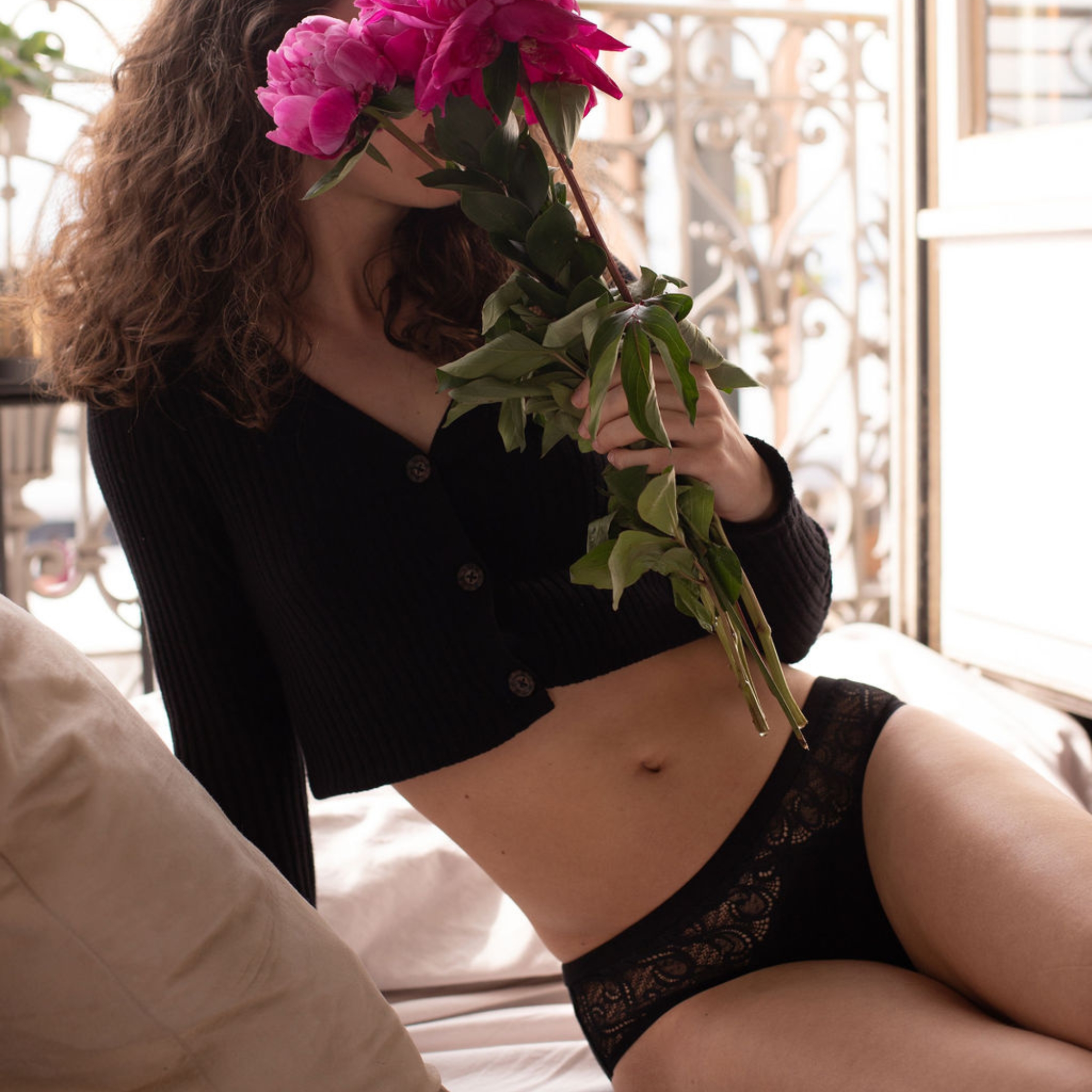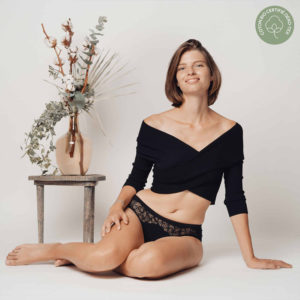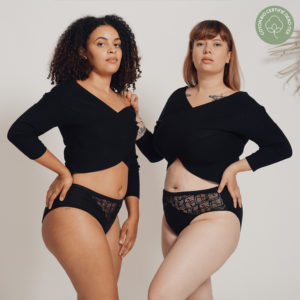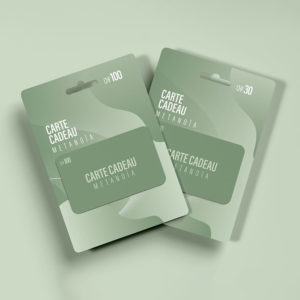Menopause is a natural stage in every woman’s life, marked by the cessation of menstruation and a drop in hormone levels. Although this is a natural transition, it can bring with it a number of uncomfortable symptoms. These include urinary incontinence, which can have a considerable impact on quality of life.
In researching the subject, I was lucky enough to hear from a number of women. First and foremost, I noticed how taboo this subject is, which is completely understandable, but which then leads to a lack of knowledge and a profound sense of loneliness. If women talked about it more amongst themselves, they’d realize that they’re not alone. They all had amusing anecdotes, anecdotes which nonetheless lead to the stress of saying to themselves: “I hope nothing happens to me” or “I won’t drink much before I go there”. Some even deliberately avoid going to shows or stand-ups. And often, it doesn’t take much: “I get out of my car, there’s a sudden change in temperature and hop! I run to the bathroom like a child, squeezing my legs together”. It’s a stress and a moment we end up dreading. So while the anecdotes were funny, it’s important to take this subject seriously and improve the lives of these women. Menstrual panties are made for blood flow, but also for urine. In fact, urine is even easier to absorb than blood, as there are no lumps or other deposits present in blood. Incontinence briefs are made from the same fabrics as menstrual briefs, and factories that manufacture menstrual briefs often offer a range of incontinence briefs.
What is Urinary Incontinence?
Urinary incontinence refers to the involuntary loss of urine. This condition can manifest itself in different ways and can be classified into several types, including:
- Incontinence d’effort : fuites lors de toux, éternuements ou efforts physiques.
- Incontinence par impériosité : besoin urgent et soudain d’uriner, suivi d’une fuite.
- Incontinence par débordement : la vessie ne se vide pas complètement, entraînant des fuites.
- Incontinence fonctionnelle : incapacité d’atteindre les toilettes à temps en raison de problèmes de mobilité.
- Mixed incontinence: combination of more than one type of incontinence.
Causes of Urinary Leakage During Menopause
Several factors can cause or aggravate incontinence during menopause:
- Reduced estrogen levels: Estrogen plays a key role in the health of urethral and bladder tissues. A drop can weaken these tissues, increasing the risk of leakage.
- Weakening of the pelvic floor muscles: These muscles support the bladder. With age, they can weaken, increasing the risk of stress incontinence.
- Weight gain: Weight gain can increase pressure on the bladder, which can lead to leakage.
- Urinary tract infections: Menopausal women are more likely to develop infections, which can cause temporary incontinence.
- Medical conditions: Certain diseases, such as diabetes or neurological conditions, can increase the risk of incontinence.
- Previous surgeries: Procedures such as hysterectomy can affect the pelvic floor muscles.
- Other factors: Smoking, excessive alcohol or caffeine consumption, and certain medications can also increase risk.
Innovative Solutions: Menstrual Panties
As I mentioned earlier, menstrual pants were originally designed to manage menstrual flow, their absorption capacity nevertheless makes them suitable for managing bladder weakness too. Our two models can be recommended:
- Our mGigi model: Intended for medium menstrual flows, this model is ideal for those suffering from moderate stress incontinence or urge incontinence. The design effectively absorbs small leaks, offering discreet protection.
- Our Model Maxie: Designed for heavy menstrual flow, this model is ideal for those with heavier urge incontinence, mixed incontinence or overflow incontinence. It offers increased absorption, which is particularly useful for heavier or continuous leakage.
If these terms seem boring and unclear to you, here’s another way of popularizing this vocabulary: The choice between our panty models will depend on the volume and frequency of your bladder weakness. After all, it can be complicated and unpredictable to determine your own types of leakage.
The volume: if you experience light leaks, usually caused by sudden pressure on the bladder (due to coughing, sneezing, laughing or exercise, for example), our Gigi model could be ideally suited to your needs. However, for more substantial leakage, resulting from a sudden need to urinate, we recommend our Maxie panties.
The frequency with which you encounter these leaks is another important factor to consider. If your leaks are occasional throughout the day, the Gigi model might be sufficient. On the other hand, if you face frequent bladder leakage during your day, Maxie panties may prove more appropriate.
Conclusion
Urinary incontinence during the menopause can be embarrassing, but there are innovative solutions for managing it. Menstrual pants, with their absorbent properties, offer a comfortable, eco-friendly option for women looking for a discreet alternative to traditional pads. Whether you have a light or heavy flow, options like the Gigi or Maxie model can offer the protection you need. I hope this article has helped you, and if you have any further questions, please don’t hesitate to drop us a line via our email address: welcome@bymetanoia.ch
See you soon!







